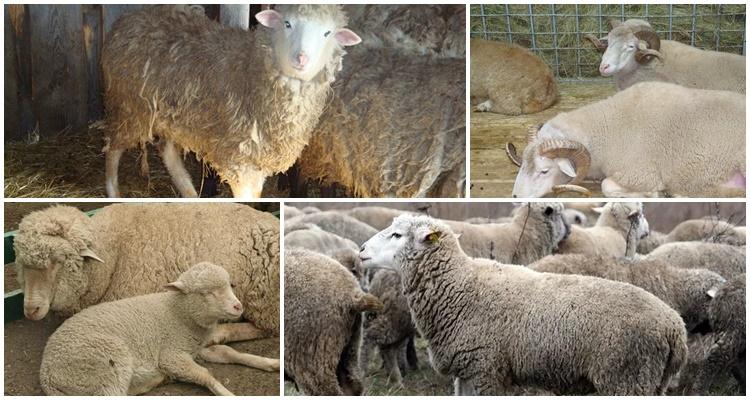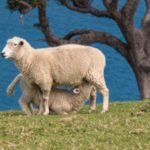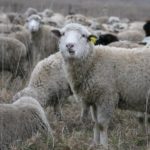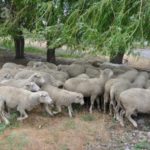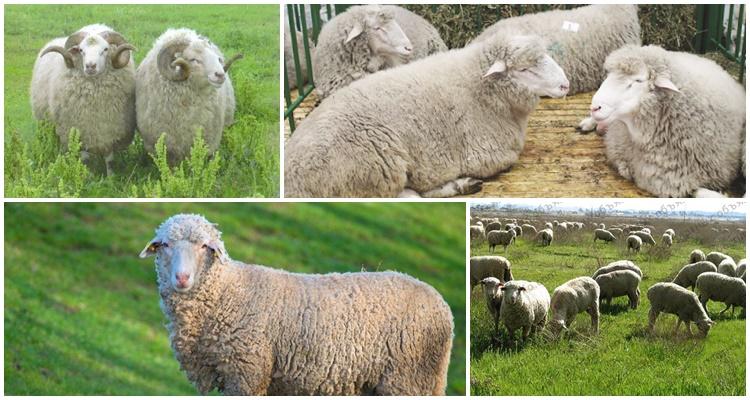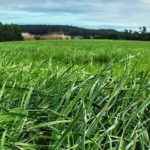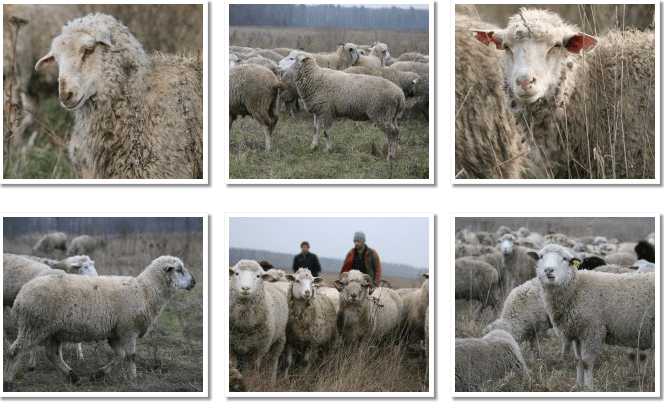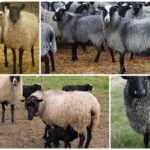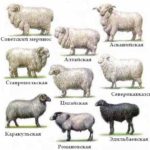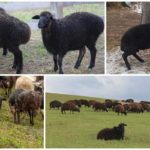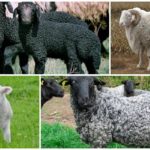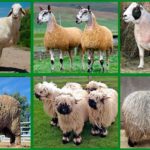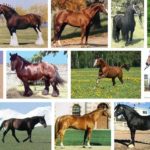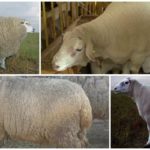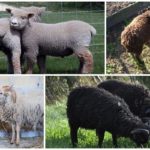Tsigai is considered one of the best breeds of sheep, which is an excellent source of high-quality meat and wool. In addition, these animals are famous for their attractive appearance, endurance, and fertility. The Tsigai breed of sheep is distinguished by its high productivity, which allows breeding in two directions: meat-wool and wool-meat.
History of the breed
The ancestors of the Tsigai breed are considered to be fine-wool sheep that lived in Asia Minor before our era.For several centuries, local residents worked to improve the qualities of the breed, trying, as far as possible, to increase productivity while maintaining the endurance of the animals.
Mass breeding of the breed began in Europe at the end of the 18th century. Tsigai sheep ended up on Russian soil at the beginning of the 19th century thanks to emigrants. Since then, local residents began to cross Tsigai rams with Merino females.
In this way, the characteristics of animal fur were improved. The next generation was mixed with rams brought from Bulgaria.
Modern representatives of the breed are divided into two groups:
- Wool and meat (Crimean type).
- Meat and wool (Azov type). The breed was obtained by crossing the Tsigai with the English Romney Marsh.
Appearance and characteristics of sheep
Regardless of which group the animals belong to, representatives of both varieties have common external properties:
- The body of the representatives of the breed is strong, muscular, and has a barrel-shaped appearance. The chest is wide and deep. The sizes are average. The body expands in the area of the back and withers.
- The skeleton is strong.
- The tail is thin and long.
- The limbs are strong, smooth, and of medium length. The hooves are strong enough to support a large body weight: the weight of an adult ram varies from 75 to 85 kilograms (often reaching 100), and females can weigh from 45 to 50 kilograms.
- The head is medium sized and oval in shape. Males have large curled horns. Females do not have these.
- The neck is thick and short.
- The skin is smooth and elastic. At the same time, in the cubs it gathers into folds, which disappear as they grow.
- The coat is white, thick, uniform, durable, and practically does not mat.
On average, the life expectancy of representatives of this breed is from 12 to 14 years.
Pros and cons of the Tsigai breed
The Tsigai breed boasts many positive qualities, including:
- endurance;
- the ability to get used to new living conditions;
- attractive appearance;
- high productivity (sheep produce high-quality wool, meat and milk);
- fast growth;
- early onset of puberty.
The wool of Tsigai sheep is used to sew warm fur products. In addition, it lends itself well to painting in the desired color. Animal fleece serves as raw material for the production of soft threads, which are later used to create durable fabrics.
The disadvantages of the Tsigai breed are:
- The need for pastures that are located at higher elevations (sheep do not feel well in pens). Lowlands are not suitable, since animals there become infected with helminthiases (fascioliasis, dictyocalosis and other similar diseases).
- Low fertility of females.
- Despite the fact that the breed can adapt to different weather conditions, it does not tolerate frost and precipitation well. Therefore, in winter, sheep are kept in sheepfolds.
- Animals are susceptible to diseases if kept in damp climates.
- Increased bone fragility.
Rules for keeping and caring for animals
The Tsigai breed is not too demanding in terms of conditions and care. However, it is important to consider the following nuances:
- lack of nutrition, lack of vitamins and minerals lead to deterioration of the coat;
- In winter, sheep need special care, as they do not tolerate low temperatures well;
- in summer, animals graze in pastures, where they spend time from morning until dark;
- in the middle of the day the sheep are driven into the stall for watering;
- it is necessary to ensure regular nutrition and access to water;
- in cold seasons and during prolonged rains, animals are transferred to special buildings with a clay floor, thickly covered with straw, and wooden walls;
- the sheep room should be warm and dry; the absence of drafts and the presence of ventilation are important;
- drinking bowls and feeders should be located inside;
- it is necessary to arrange separate pens for ewes and newborn lambs;
- it is important to monitor the purity of the water and the freshness of the food;
- free space for each animal is 3 square meters;
- In winter, you need to take the sheep out for a walk - preferably every day, if it is not very cold and there is no snowfall;
- When the weather warms up, the transition to a new regime occurs gradually - on the first day, a walk in the pasture lasts 2-3 hours, and every day this time increases.
Diet
The Tsigai breed is very demanding regarding nutritional conditions - the quality and quantity of food. The diet is formed depending on the sex, age and degree of fattening of the animal. In summer, animals eat green grass in pastures. The daily norm for an adult male is about 10 kilograms of grass, for a female – up to 8 kilograms.
In winter, when females bear cubs, nutrition should be complete and varied:
- hay;
- vegetables and root vegetables;
- compound feed;
- mineral supplements.
Subtleties of sheep breeding
Animals are brought together in late August-early September. Gestation lasts approximately 150 days. After lambing, the feeding period begins, which lasts four months (during this time, one female gives 100-120 liters of milk).
Other breeding features of Tsigai sheep include:
- females become sexually mature at four months;
- Cubs are born once a year, in winter;
- labor lasts about an hour;
- at a time a sheep gives birth to 1-2 lambs;
Mating is carried out only when the female gains weight of more than 40 kilograms.
Diseases that the breed suffers from
If the rules of care are not followed, representatives of this breed can get sick. Pathologies common among Tsigai sheep include:
- helminthiasis (when animals consume low-quality grass);
- brittle bones (due to poor nutrition, which lacks minerals);
- foot rot (appears if sheep are grazed in a wetland, as well as if sanitary requirements are not met);
- pneumonia (if sheep live in a damp climate, are constantly exposed to drafts, and also if they are sheared ahead of time).
Habitat zones
The ability to adapt to different climatic conditions has made it possible to breed the breed in many countries. Animals are successfully raised in Slovakia, Russia, Poland, Australia, Ukraine, and Kazakhstan. In Russia, Tsigai sheep are bred in Rostov, Saratov, Orenburg and other regions.
In the northern regions, it is allowed to keep sheep in warm sheepfolds. Tsigai sheep are a sought-after breed, valued for their high meat and wool productivity, as well as endurance and ability to adapt to new environments. The breed also has a number of disadvantages, but the positive aspects still prevail over them.

